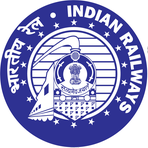Navigating India's Infrastructure Landscape: Challenges and Developments
October 15, 2024, 4:34 am
India's infrastructure is a complex tapestry, woven with ambition and challenge. Recent developments highlight the nation's ongoing struggle to balance growth with safety and fiscal responsibility. From rail expansions to highway constructions, the stakes are high, and the implications are profound.
The parliamentary panel on railways is at the forefront of this discussion. Safety is the thread that runs through their agenda. Recent accidents have raised alarms, prompting opposition parties to question the government's commitment to secure rail operations. The Railway Ministry counters, citing a significant drop in accident rates under the current administration. Yet, the specter of safety looms large, demanding attention.
The panel's focus extends beyond safety. They aim to expand the railway network, particularly in the North East and Union Territories. This region, often overlooked, holds potential for economic growth. High-speed trains are also on the table, with ambitious plans linking Mumbai and Ahmedabad. However, land acquisition remains a thorny issue, stalling progress.
Public facilities at railway stations are another concern. The committee seeks to enhance passenger experiences, making travel smoother and more enjoyable. This aligns with a broader vision of promoting railway-based tourism, tapping into India's rich cultural heritage.
Freight earnings are crucial too. The panel is exploring dedicated freight corridors to boost efficiency. This could transform logistics, making it easier to move goods across the country. The potential for economic growth is immense, but it requires careful planning and execution.
Meanwhile, in Maharashtra, the cabinet has approved a massive Rs 247.02 billion expressway project connecting Jalna and Nanded. This expressway promises to reduce travel time significantly, cutting a four-hour journey down to two. Yet, fiscal pressures are mounting. The state's finance department warns of a looming fiscal deficit, already exceeding Rs 2 trillion.
The debt-equity ratio for the expressway project is set at 52.81:47.19, a delicate balance. The finance department emphasizes the need for caution. Additional loans could push the fiscal deficit beyond the 3% limit of Gross State Domestic Product (GSDP). The challenge is clear: infrastructure development must not come at the cost of financial stability.
The Public Works Department acknowledges these concerns. They assure that financial planning will reflect the state's fiscal realities. This expressway is not just a road; it's a lifeline for economic activity. But it must be managed wisely.
In Bengaluru, the Bruhat Bengaluru Mahanagara Palike (BBMP) has taken a hard stance on building plan approvals. Nearly 2,000 applications have been rejected due to a new directive. This move aims to ensure that local planning authorities sanction development plans before approvals are granted. The BBMP receives around 1,000 applications monthly, but the recent directive has created a bottleneck.
Engineers and applicants are pushing back, urging the BBMP to reconsider. The construction landscape is fraught with challenges, and this decision adds another layer of complexity. The city's growth is stifled, and the implications for housing and infrastructure are significant.
In Goa, the police are stepping up tenant verification efforts. A drive to verify landlords and tenants aims to enhance security in the state. Over 20,000 tenants have been checked in just nine days. The initiative underscores the importance of safety, especially in a tourist-heavy region.
Landlords are being held accountable for failing to verify tenant credentials. This is a proactive approach to prevent crime and ensure community safety. The Goa Verification of Tenants Act strengthens this process, aiming to create a secure environment for residents and visitors alike.
The backdrop of these developments is a nation striving for progress. Infrastructure is the backbone of economic growth. Yet, it must be pursued with caution. Safety, fiscal responsibility, and community well-being are paramount.
As India navigates this complex landscape, the balance between ambition and caution will define its future. The railway expansions, expressway constructions, and tenant verification drives are all pieces of a larger puzzle. Each decision has far-reaching consequences.
The challenge lies in harmonizing these efforts. Infrastructure must be built not just for today, but for future generations. It requires foresight, planning, and a commitment to safety and sustainability.
In conclusion, India's infrastructure journey is a multifaceted endeavor. The recent developments reflect a nation at a crossroads. The path forward demands careful navigation, balancing growth with responsibility. The stakes are high, but the potential rewards are even greater. As the nation moves forward, the lessons learned today will shape the infrastructure landscape of tomorrow.
The parliamentary panel on railways is at the forefront of this discussion. Safety is the thread that runs through their agenda. Recent accidents have raised alarms, prompting opposition parties to question the government's commitment to secure rail operations. The Railway Ministry counters, citing a significant drop in accident rates under the current administration. Yet, the specter of safety looms large, demanding attention.
The panel's focus extends beyond safety. They aim to expand the railway network, particularly in the North East and Union Territories. This region, often overlooked, holds potential for economic growth. High-speed trains are also on the table, with ambitious plans linking Mumbai and Ahmedabad. However, land acquisition remains a thorny issue, stalling progress.
Public facilities at railway stations are another concern. The committee seeks to enhance passenger experiences, making travel smoother and more enjoyable. This aligns with a broader vision of promoting railway-based tourism, tapping into India's rich cultural heritage.
Freight earnings are crucial too. The panel is exploring dedicated freight corridors to boost efficiency. This could transform logistics, making it easier to move goods across the country. The potential for economic growth is immense, but it requires careful planning and execution.
Meanwhile, in Maharashtra, the cabinet has approved a massive Rs 247.02 billion expressway project connecting Jalna and Nanded. This expressway promises to reduce travel time significantly, cutting a four-hour journey down to two. Yet, fiscal pressures are mounting. The state's finance department warns of a looming fiscal deficit, already exceeding Rs 2 trillion.
The debt-equity ratio for the expressway project is set at 52.81:47.19, a delicate balance. The finance department emphasizes the need for caution. Additional loans could push the fiscal deficit beyond the 3% limit of Gross State Domestic Product (GSDP). The challenge is clear: infrastructure development must not come at the cost of financial stability.
The Public Works Department acknowledges these concerns. They assure that financial planning will reflect the state's fiscal realities. This expressway is not just a road; it's a lifeline for economic activity. But it must be managed wisely.
In Bengaluru, the Bruhat Bengaluru Mahanagara Palike (BBMP) has taken a hard stance on building plan approvals. Nearly 2,000 applications have been rejected due to a new directive. This move aims to ensure that local planning authorities sanction development plans before approvals are granted. The BBMP receives around 1,000 applications monthly, but the recent directive has created a bottleneck.
Engineers and applicants are pushing back, urging the BBMP to reconsider. The construction landscape is fraught with challenges, and this decision adds another layer of complexity. The city's growth is stifled, and the implications for housing and infrastructure are significant.
In Goa, the police are stepping up tenant verification efforts. A drive to verify landlords and tenants aims to enhance security in the state. Over 20,000 tenants have been checked in just nine days. The initiative underscores the importance of safety, especially in a tourist-heavy region.
Landlords are being held accountable for failing to verify tenant credentials. This is a proactive approach to prevent crime and ensure community safety. The Goa Verification of Tenants Act strengthens this process, aiming to create a secure environment for residents and visitors alike.
The backdrop of these developments is a nation striving for progress. Infrastructure is the backbone of economic growth. Yet, it must be pursued with caution. Safety, fiscal responsibility, and community well-being are paramount.
As India navigates this complex landscape, the balance between ambition and caution will define its future. The railway expansions, expressway constructions, and tenant verification drives are all pieces of a larger puzzle. Each decision has far-reaching consequences.
The challenge lies in harmonizing these efforts. Infrastructure must be built not just for today, but for future generations. It requires foresight, planning, and a commitment to safety and sustainability.
In conclusion, India's infrastructure journey is a multifaceted endeavor. The recent developments reflect a nation at a crossroads. The path forward demands careful navigation, balancing growth with responsibility. The stakes are high, but the potential rewards are even greater. As the nation moves forward, the lessons learned today will shape the infrastructure landscape of tomorrow.

